An Introduction to Sushi and Sashimi
Modern Japanese Food Explained
Perhaps the most well-known Japanese food around, sushi is a classic must-have when in Japan. Here’s the ubiquitous Japanese dish simplified.
Whether had at a famous kaiten-sushi restaurant or at a luxurious establishment where it’s made right before your eyes, dining on sushi is definitely an experience you won’t soon forget.
Sushi versus sashimi
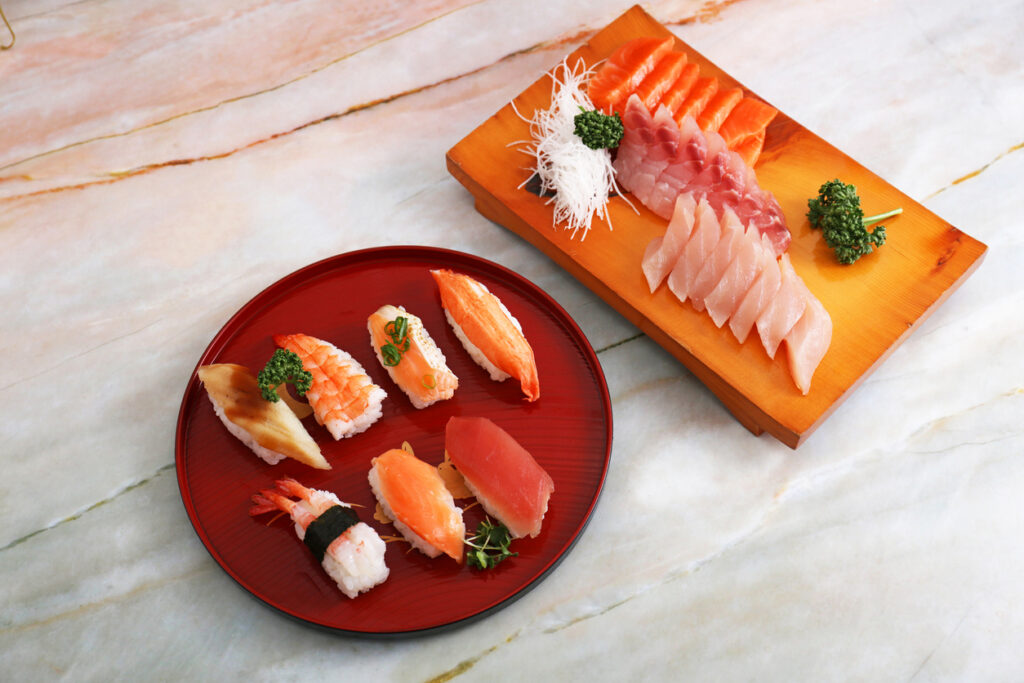 © Photo by iStock: sunabesyou
© Photo by iStock: sunabesyouSimply put, sushi (寿司, すし) are slices of fresh fish or seafood (known as gu 具) on white rice that has been flavored with sushi vinegar. Sushi vinegar is a mild rice vinegar made from fermented rice, which may be further seasoned with sugar and salt. Sashimi (刺身, さしみ), on the other hand, are just slices of fresh fish or seafood typically placed on finely cut daikon radish, seaweed or shiso (perilla) leaves.
Though they seem similar, sashimi and sushi are technically prepared differently. However, both sushi and sashimi are eaten with soy sauce, wasabi and/or ginger.
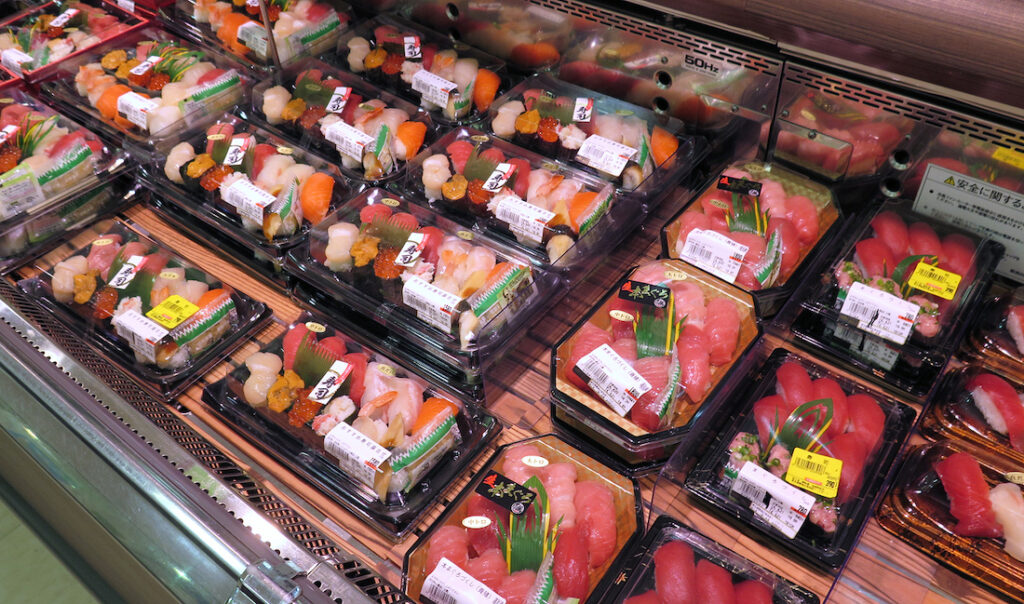 © Photo by iStock: BLUEXHAND
© Photo by iStock: BLUEXHANDWhat we consider standard sushi today was first invented in the Edo era, and was a fast food for the time. After WWII and right up until the 1980s, sushi was a luxury food that few could afford. During Japan’s bubble economy take-out sushi, deli sushi and conveyor belt sushi restaurants came into fashion and brought sushi to the masses. Nowadays you can even find sushi at convenience stores.
Modern sushi options can also include meats, vegetables and even fruits. In some chain restaurants, you’ll even find mini sushi-ized takes on other foods such as pizza, tacos or hamburgers.
The main types of sushi
Nigirizushi
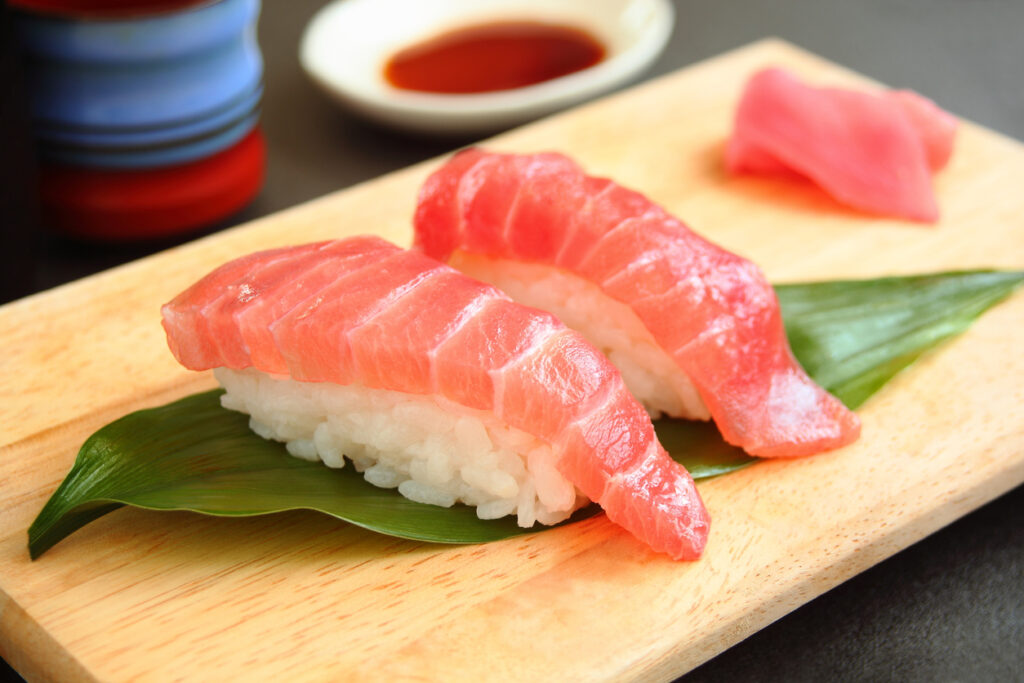 © Photo by iStock: hungryworks
© Photo by iStock: hungryworksNigirizushi (握り寿司) is the original and, some would argue, the most common type of sushi. A small portion of sushi rice is shaped into an oval and has a topping placed over it. The sushi is either ready to eat, or in some places, the topping may be lightly grilled with a torch, covered in a special sauce or spices, or stacked high with other toppings too.
Makizushi
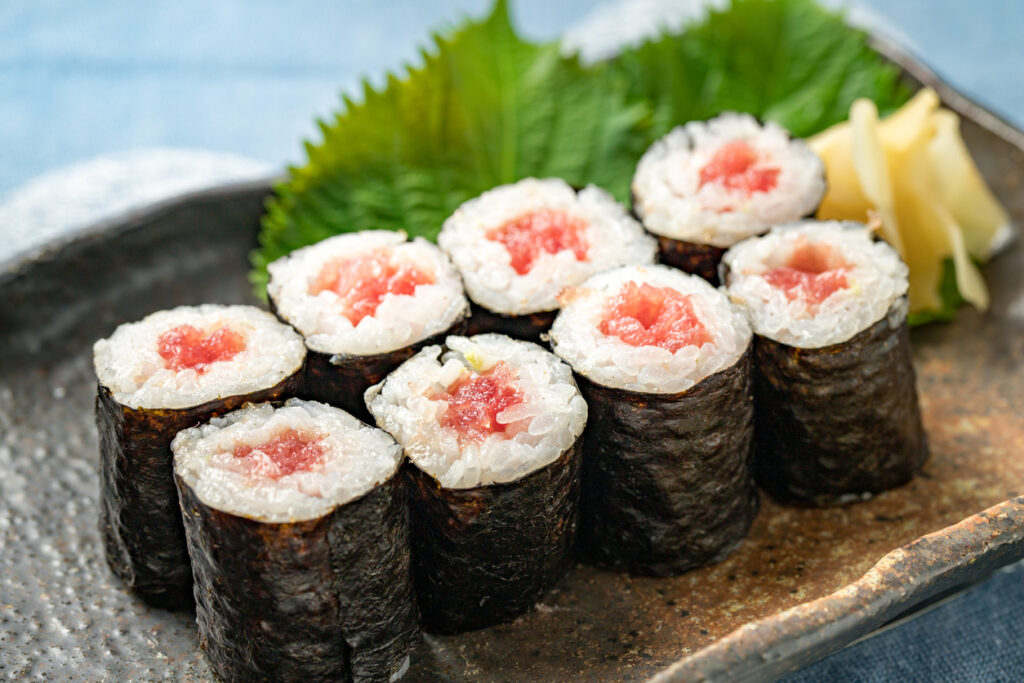 © Photo by iStock: flyingv43
© Photo by iStock: flyingv43Maki means ‘to roll’ and makizushi (巻き寿司) is sushi where the rice is laid on a sheet of seaweed, the toppings are placed on the rice, and then the entire thing is rolled together and cut into pieces.
These come in two main varieties: hosomaki (細巻き) which are thin, smaller rolls typically filled with cucumber (called kappa-maki), kanpyo (dried gourd), natto, minced tuna or salmon.
Futomaki (太巻き), on the other hand, are thicker rolls filled with a number of different toppings together that are cut into smaller slices. During Setsubun, you can also find ehomaki (恵方巻き), which are essentially uncut futomaki filled with all sorts of different auspicious ingredients.
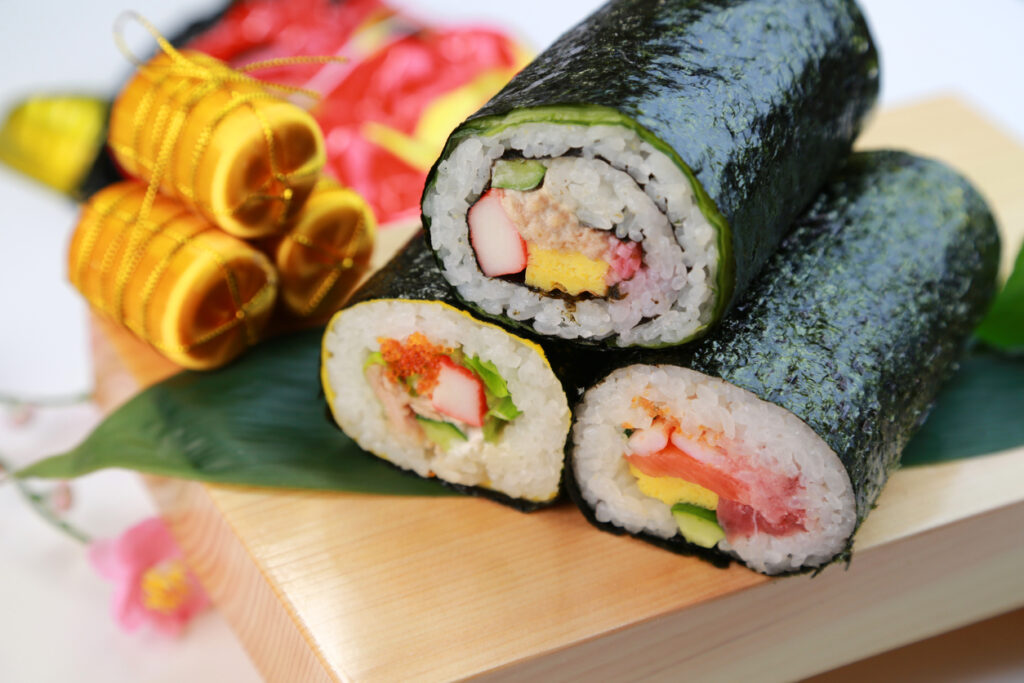 © Photo by iStock: yasuhiroamano
© Photo by iStock: yasuhiroamanoThere is also a type known as uramaki (裏巻き), where the rice is on the outside, followed by a layer of seaweed and then the toppings. The most famous and best-known international example of this is the California roll.
Gunkan Maki
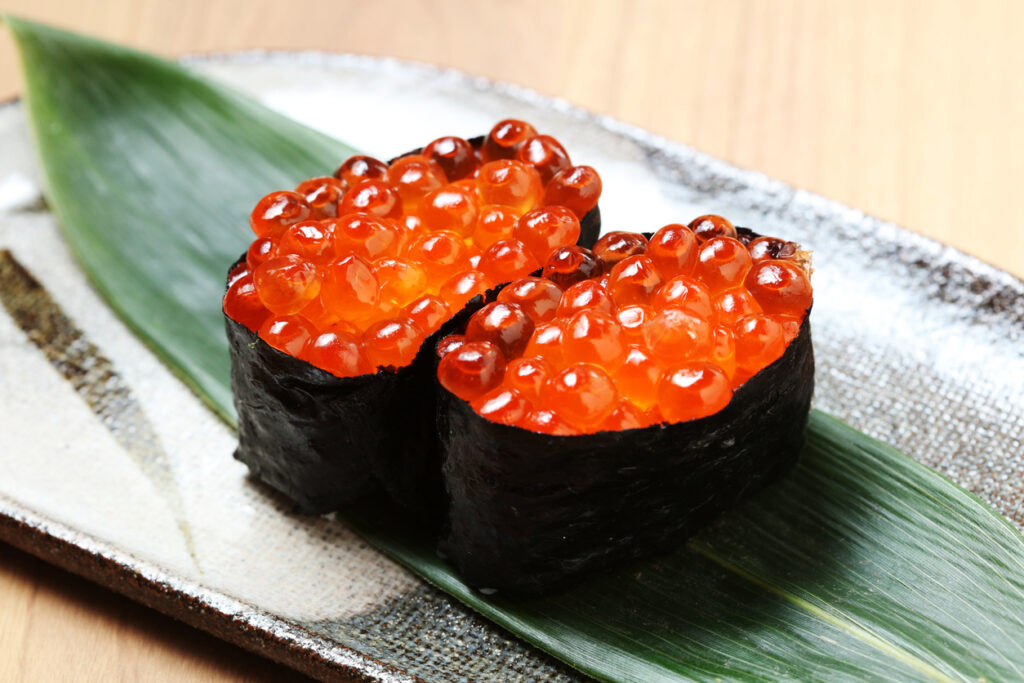 © Photo by iStock: key05
© Photo by iStock: key05Gunkan maki (軍艦巻き寿司) are made by vertically wrapping a smaller nigiri zushi style rice oval in seaweed and using the space above the rice and ‘walls’ of seaweed to contain the toppings. The name gunkan comes from this sushi’s resemblance to warships.
Gunkan maki is the standard option for toppings which may spill or fall over easily if they were directly placed on the rice alone. So ikura (fish roe) kanimiso (tomalley), tuna salad, potato salad, corn mayo and other such varieties are only found in gunkan maki zushi.
Inari zushi
Arguably one of the most beloved types of sushi, inari zushi (いなり寿司) refers to vinegared rice stuffed inside abura-age (油揚げ, fried tofu slices cooked in a sweet sauce) pockets.
These may also contain sesame seeds, chopped preserved plums, sweet or grilled shrimp, diced seasonal herbs and vegetables or be flavored with yuzu juice or peels, or kuromitsu (unrefined muscovado sugar).
A part of their popularity with all ages stems from their typical inclusion with soba or udon noodle dishes, especially in sets sold in delis, supermarkets and convenience stores.
Temaki zushi
Somewhat similar to makizushi, temaki zushi (手巻き寿司) are often called ‘hand rolls’ in English. These are rolled cones of seaweed with sushi rice and toppings inside them. Temaki zushi are often made for parties or are made during parties, especially with kids.
Temari zushi
Similar to nigiri zushi, temari zushi (手まり寿司) are sushi balls, essentially. A small portion of sushi rice is placed on plastic wrap, then has fish laid over it. The plastic wrap is then lifted and tightened around the sushi by hand until it has formed a circle.
Temari zushi are also a party favorite, and in recent years many have been making them for Halloween as, with a little creativity, a salmon temari zushi can be made to look like a jack o’lantern.
Oshi zushi
Oshizushi (押し寿司), or pressed sushi, is precisely as its name sounds. By using a special wooden or plastic box, known as an oshizushi hako (押し寿司箱), layers of sushi rice and toppings are pressed together tightly and then cut into square portions to eat. This type of sushi was first developed in the Kansai region, and is sometimes since as the competitor for Edo sushi.
Common toppings are mackerel, red snapper and salmon, but there are regional variations found all across Japan. For example, there’s omura sushi from Nagasaki that has scrambled eggs, while masu sushi (trout) is a popular dish from Toyama.
Chirashi or Bara zushi
Possibly the least sushi-like when compared to the others on this list, chirashi zushi (ちらし寿司) or bara zushi (ばら寿司) are better known in English as scattered sushi.
Both terms refer to dishes where sushi rice (or even plain rice) is placed in the base of a wooden sushi bowl or box, and topped with various ingredients such as roe, cubed or shredded Japanese omelet, salmon, tuna, shrimp, lotus root, snap peas or shiitake mushrooms.
Is it sushi or zushi?
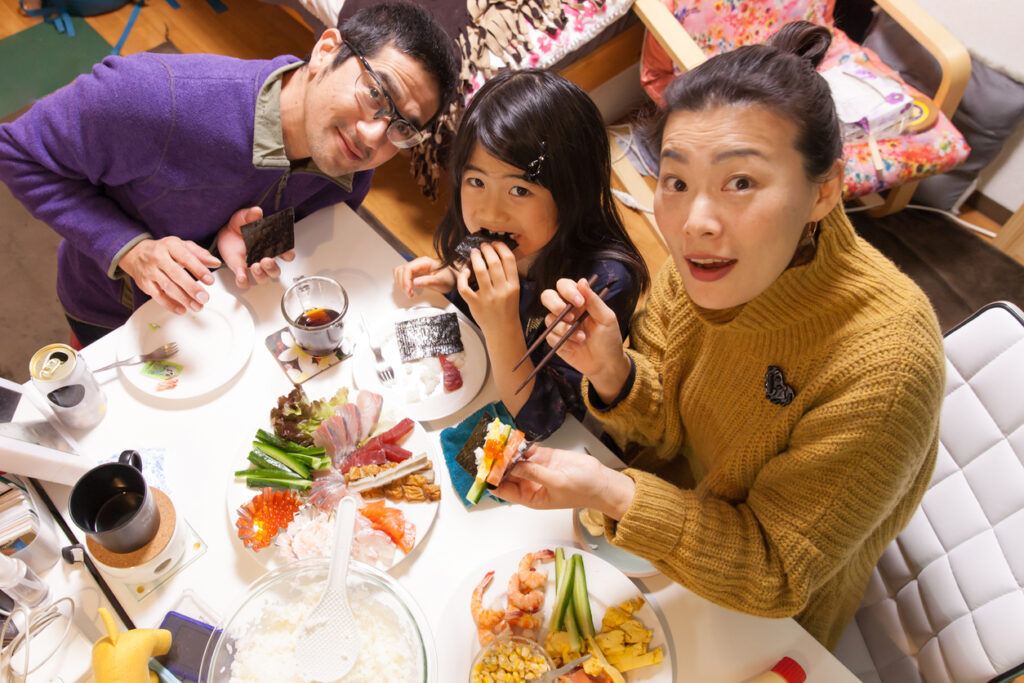 © Photo by iStock: kumikomini
© Photo by iStock: kumikominiYou may hear both sushi and zushi being used, especially in restaurant names, but they aren’t different words. In Japanese, some consonants are hardened when used as the first letter of a compound word. So while it’s sushi in general, it’s nigiri-zushi.
Do you eat sushi with chopsticks or hands?
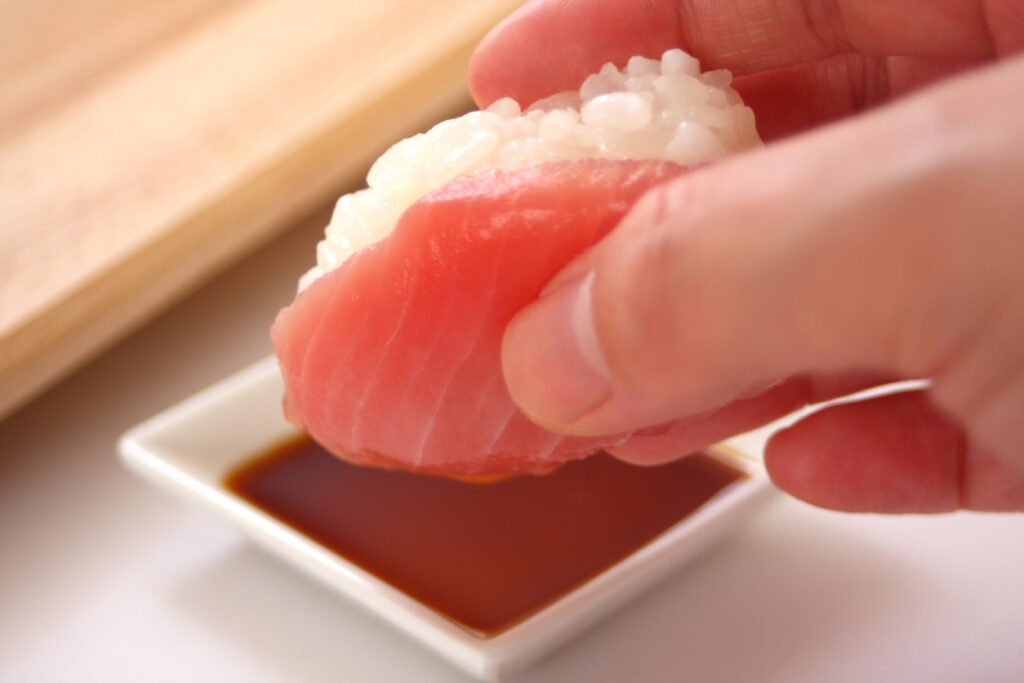 © Photo by iStock: hungryworks
© Photo by iStock: hungryworksIn traditional Japanese sushi etiquette, it is common to eat nigirizushi with your hands. On the other hand, rolls, such as maki or temaki, are typically eaten with chopsticks. However, the best way to eat sushi is up to personal preference—enjoy it the way you like best. Both chopsticks and hands are ok; What about a fork and knife? Well, that may be up for debate.
What’s your favorite type of sushi?












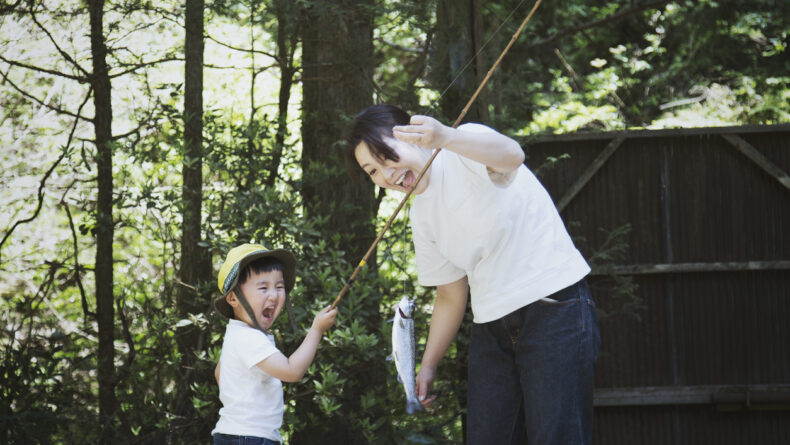
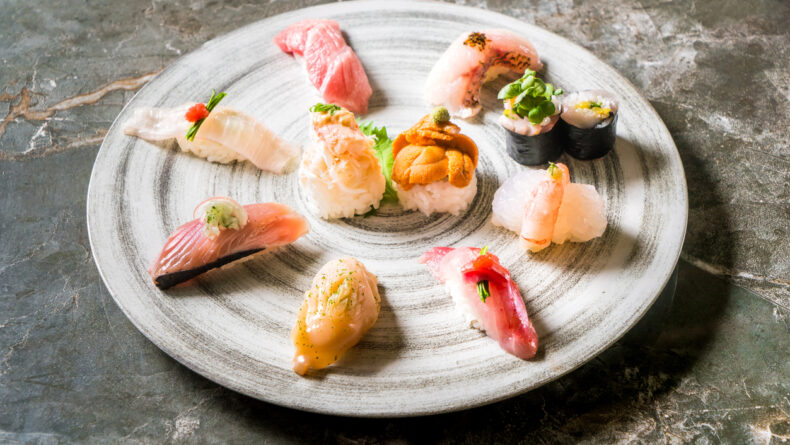
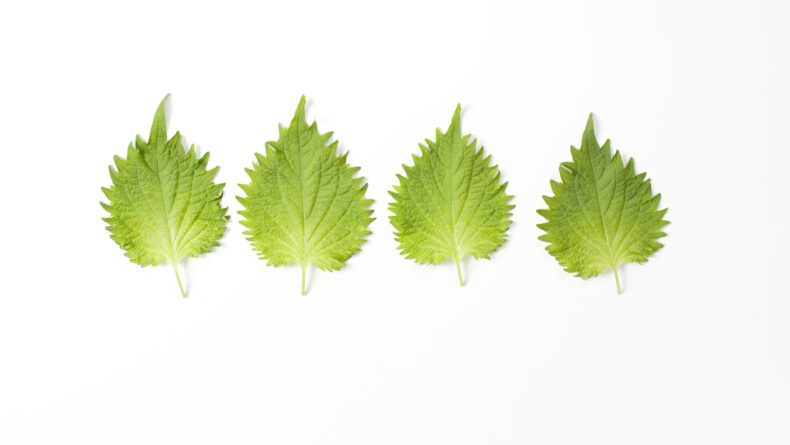
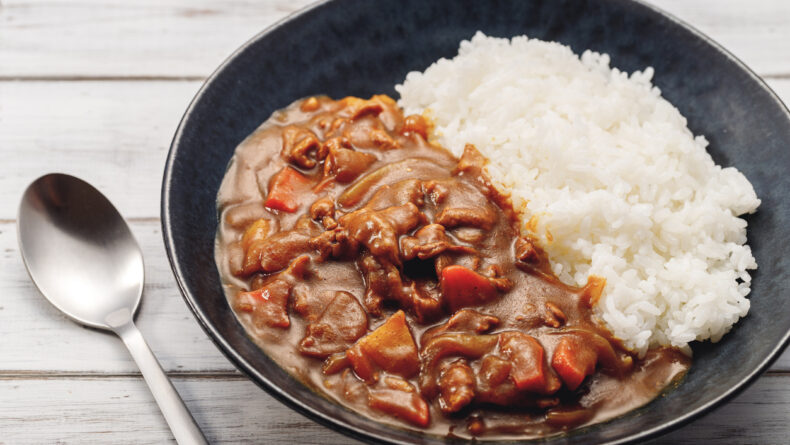
Thanks for sharing this.
Thanks to a gift from friends in Sendai (the bamboo roller) I like making my own Makizushi and Futomaki.